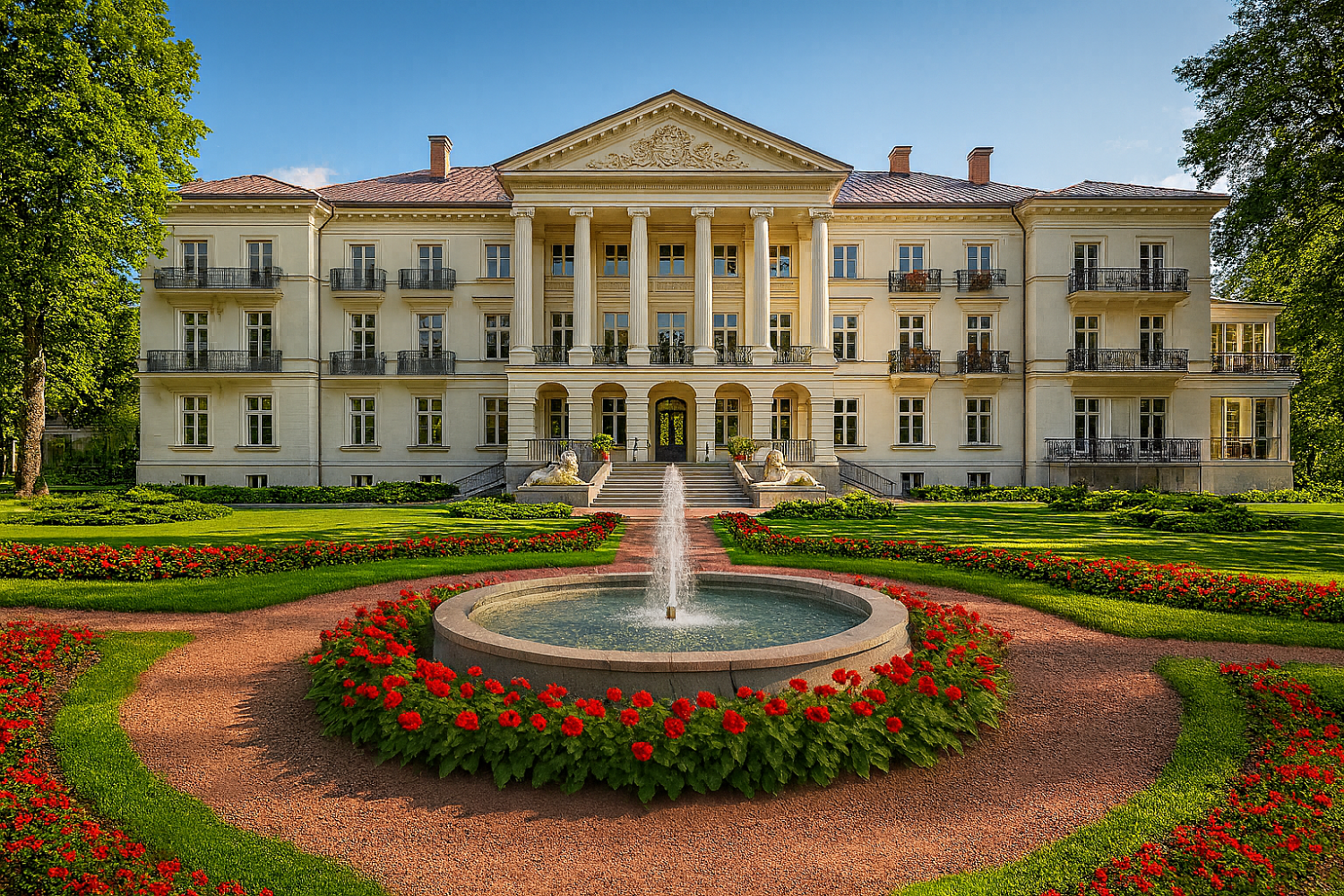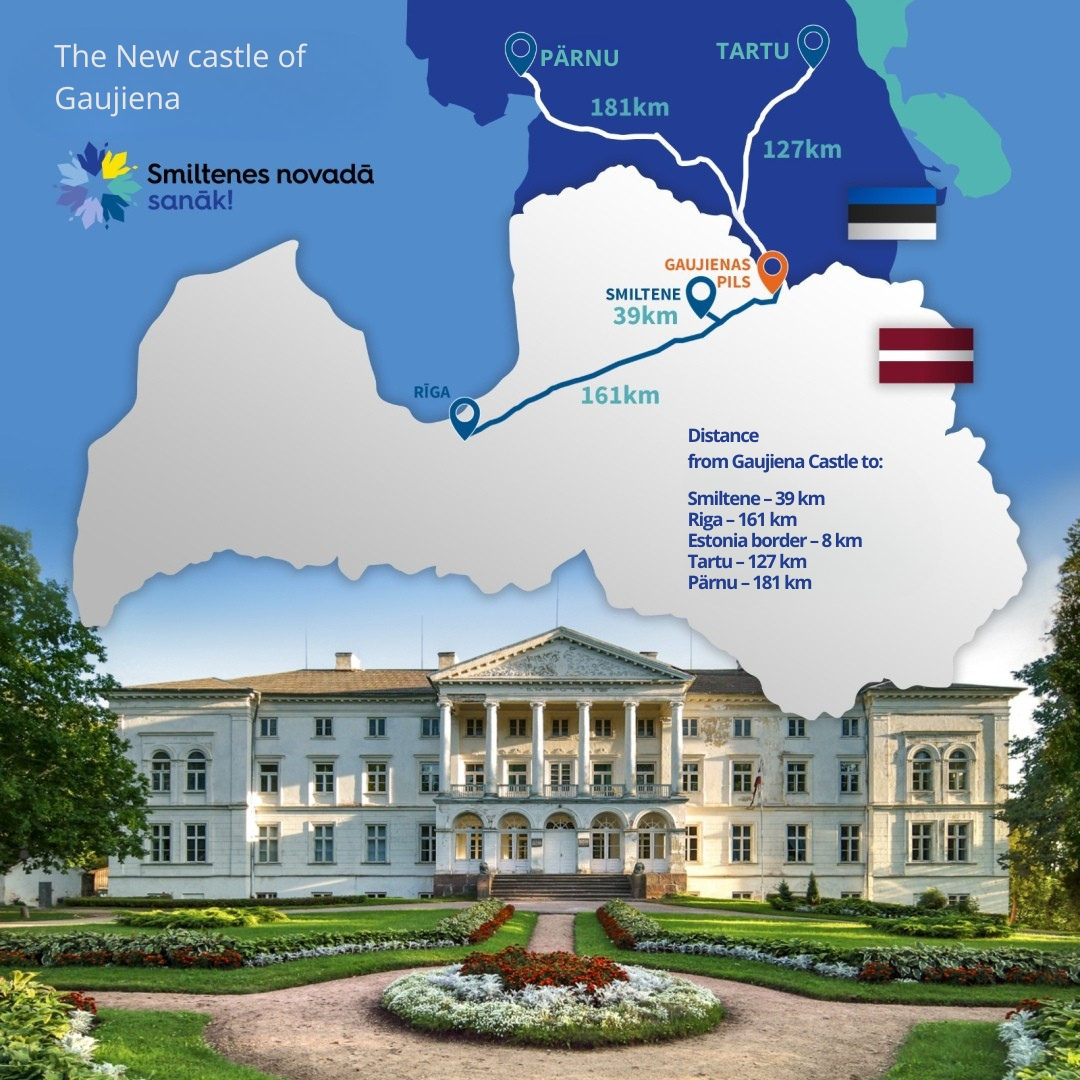The New Castle was built dolomite stones and brick masonry on a steep bank near the old manor house, in an east-west direction. The construction of the castle was chosen in a location from where a beautiful view of the surroundings opens up. Construction began after 1818, and in 1827, the main body of the castle was completed, with rooms fully arranged for the baron's family's needs.
Gaujiena Castle was built in the late Classical style and completed in 1850, when its original structure was rebuilt, adding symmetrical side risalits. The main entrance features an elaborate portico with six Ionic columns on the second floor, and the roof shape was also altered. The fronton includes a relief decoration with the baron’s coat of arms in the center. The grand entrance stairs are guarded by two reclining lions. On the second side of the castle, facing the park, the façade on the first floor opposite the entrance to the hall had a veranda with stained-glass windows and doors. Today, there is only a terrace with railings, accessed by a two-sided staircase made from forged granite stones. The facade is also enhanced by smaller balconies with ornate cast-iron railings and corbels.
Source of information: vītolēni.lv
We believe in the future of Gaujiena’s New Castle – a place that will be reborn and open its doors as a versatile and inspiring center.
It will become a place where history, nature, and people meet in a new quality, offering a unique experience for different life events and needs:
-
Boutique hotel and event center – an elegant and sophisticated setting for weddings, celebrations, and international events. A premium-class retreat for both Latvian and foreign guests.
-
Artists’ and researchers’ residence – a creative space for new ideas, scientific and artistic initiatives that will strengthen the cultural and academic environment.
-
Rehabilitation and social care center – a place where professional help is combined with a peaceful environment, restoring both body and spirit.
-
SPA and health tourism complex – water therapy, nature therapy programs, silence retreats, yoga, and meditation that bring complete harmony.
-
Exclusive senior care center – a cozy, beautiful, and dignified living space that combines comfort with care and safety.
We see Gaujiena’s New Castle as a place pulsating with new energy, creating added value for the region and inspiring everyone who enters.







